10.07.2023
Stopping your car is just as important as being able to start it and nothing would happen when you pressed the middle pedal if there wasn’t brake fluid in your car. Maintaining your brake system and fluid is quite important then.
It’s a great question. Brake fluid is a hydraulic fluid which means it cannot be compressed, which is what makes it so good for a system which relies on pressure and force to function. There are different chemical compositions of brake fluid. The most common is a poly-glycol base. You don’t need to know what the compound is, only that it is hygroscopic. That means that it can take on moisture if exposed to the air. This is why a brake system is a sealed system. Another brake fluid composition is based on silicone. A silicone base is not hygroscopic so therefore doesn’t take on water. You may be thinking, ‘Why wouldn’t I just use the one that doesn’t take on water then?”. That’s because most cars these days have ABS (anti-lock braking system) and silicone-based brake fluids aren’t compatible with that. As ABS is a key safety feature to improve braking performance in emergency situations, poly-glycol based brake fluids are the most common.
As we all know, braking starts from the pedal. The brake fluid system has either a mechanical or electronic method of pressure that pushes a piston through the master cylinder when you press your foot on the pedal. The cylinder then pushes brake fluid to the calipers which push the brake pads onto the brake disc. The friction that this creates is what slows your car down.
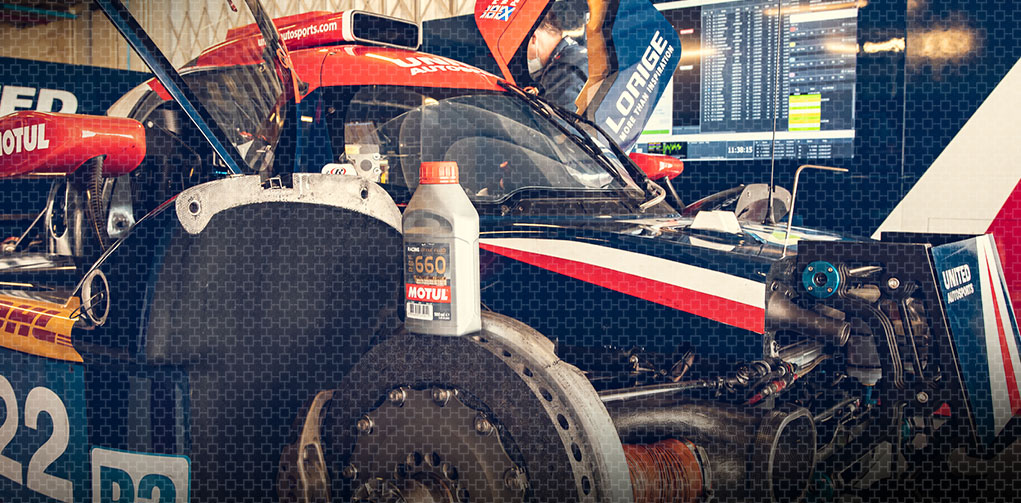
There are a few signs that your brake fluid might be in need of a change and it’s important to know what they are for your safety.
One easy way to tell is if your brake pedal isn’t very responsive. If you find yourself having to press harder on the pedal, it feels soft and spongey, or you find yourself having to pump the brakes to slow down- it’s a sign your brake system and fluid might be in need of a change. Also, if your car pulls to the left or right when you brake, it could mean that some brake fluid has escaped or has taken on some moisture- time to change.
Another sign of the low brake fluid is vibrating or noisy brakes. This could be down to another component within the braking system but it’s always worth checking your brake fluid levels. If the ABS light comes on the dashboard, then it’s also worth checking your brake fluid levels. If you check your brake fluid and it has become much darker or brown in colour, then it’s time to change the fluid.
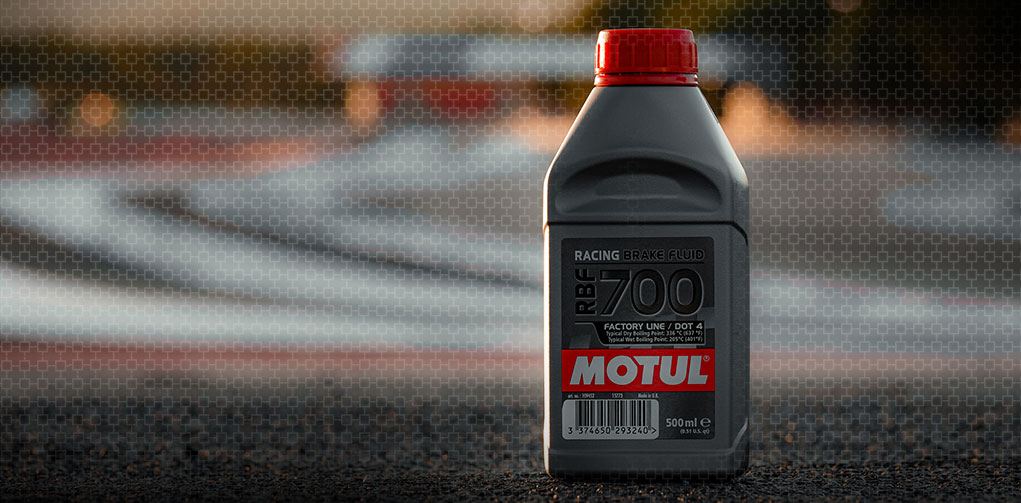
It’s the logical next question after reading the information up until now. Before you start, make sure you are using the correct brake fluid for your vehicle. This can be checked in your handbook or using the Motul oil selector.
First, jack up your car and place it on axle stands. Do not leave your car on a jack if you plan to go underneath it. Locate the brake master cylinder. Remove the cap and drain as much out as possible. Make sure you don’t get brake fluid on any painted surfaces or skin as it is corrosive.
Pour new brake fluid into the master cylinder to the full line and screw the top back onto the master cylinder.
You will need to take all four wheels off the car for this step and have a brake-bleed kit at the ready. Release the bleed-nipple at the back of each brake caliper or wheel cylinder, connect the bleed-kit and pump the brakes until all the air and old fluid flows out of the system and the new fluid starts to come through.
Go back to the master cylinder to check the brake fluid level and make sure it is topped up.
Repeat this process for all four wheels until there is no air or old brake fluid left in the system and the new brake fluid is topped up to the correct level.
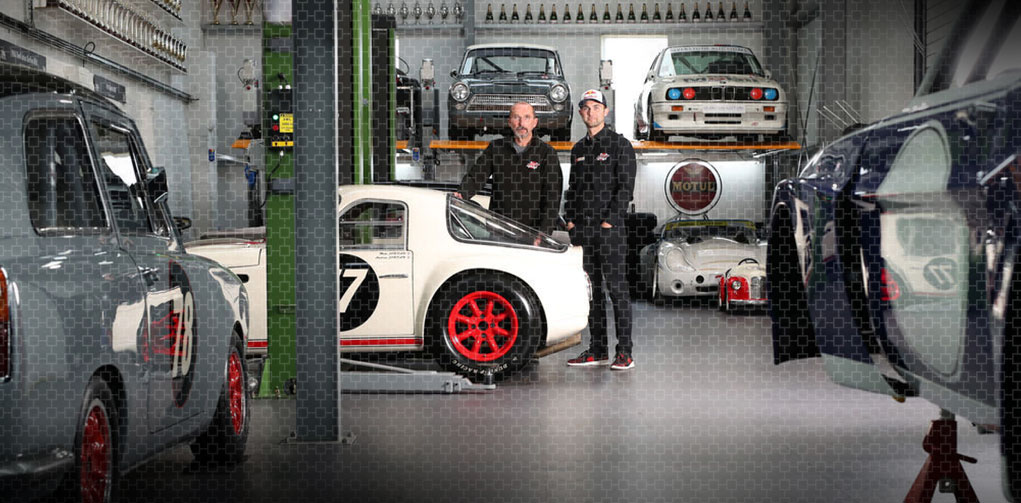
The majority of manufacturers will recommend brake fluid to be changed at least once every two years. However, this isn’t a hard and fast rule. Your service handbook or local dealer will be able to tell you, but it also depends on how you drive the vehicle and how you use the brakes.
It’s important to know the signs of brake fluid in need of change rather than relying on a specific time interval. Two years is often cited as the maximum due to moisture and dirt which may have made its way into the system in that time period.
It’s important to note that a little top-up won’t be effective, and a full system bleed has to take place if you want your brakes to keep working effectively.
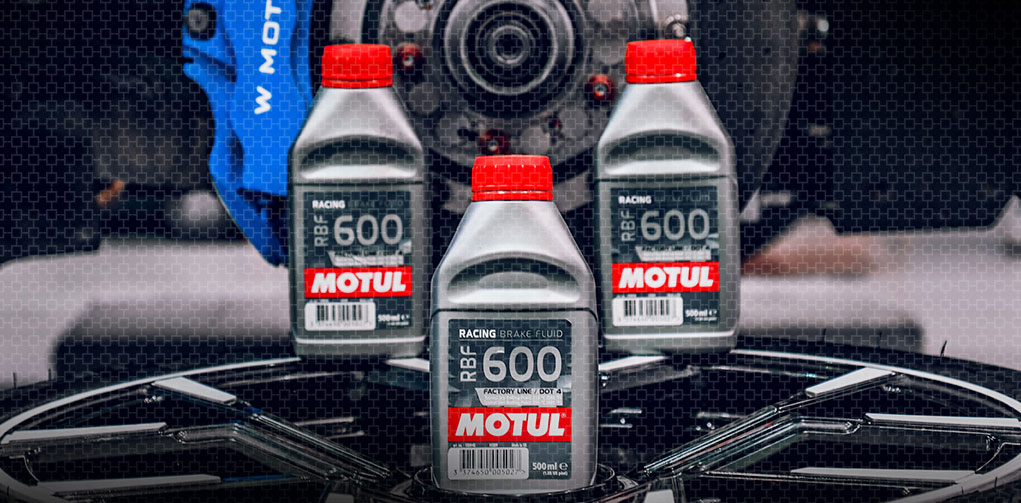
Your car will specify which brake fluid it needs, and the format will normally be in DOT. DOT stands for the US Department of Transport- who set the standards for brake fluid. All brake fluid has dry and wet boiling point. The dry boiling point refers to the boiling point of brand new, unopened brake fluid and the wet boiling point refers to older brake fluid which has absorbed 3.7% water by volume.
It’s important to know the boiling point of your brake fluid if your brakes are under strain and when brake fluid boils your braking power will drop significantly.
This is a 100% synthetic poly-glycol based brake fluid (hygroscopic) and can be mixed with DOT 3, DOT 4 and DOT 5.1.
Dry boiling point: 245 degrees Celsius/473 degrees Fahrenheit
Wet boiling point: 158 degrees Celsius/ 316 degrees Fahrenheit
Similarly to DOT 3&4, this is a 100% synthetic poly-glycol based brake fluid (hygroscopic) and can be mixed with DOT 3, DOT 4 and DOT 5.1. LV stands for ‘low viscosity’ which is required in certain applications.
Dry boiling point: 267 degrees Celsius/ 513 degrees Fahrenheit
Wet boiling point: 172 degrees Celsius/ 242 degrees Fahrenheit
Like both DOT 3&4 and DOT 4 LV, this is a 100% synthetic poly-glycol based brake fluid (hygroscopic) and although it can technically be mixed with them there is no reason for it to be as it is rated to a higher level.
Dry boiling point: 269 degrees Celsius/ 516 degrees Fahrenheit
Wet boiling point: 187 degrees Celsius/ 369 degrees Fahrenheit
All of the brake fluids listed above can be used with ABS, but your service manual will state what your vehicle requires. None of these can be mixed with DOT 5 brake fluid as it is a silicone-based brake fluid.
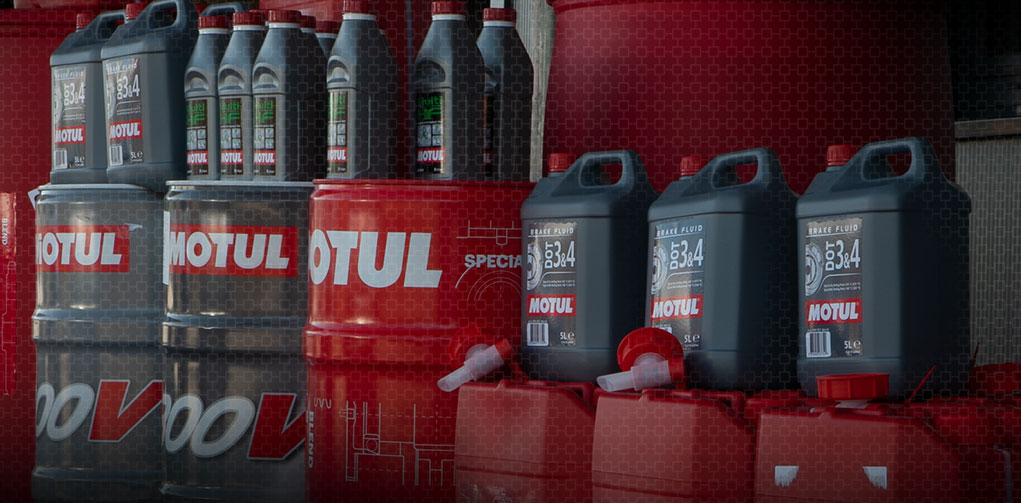
All of the RBF (Racing Brake Fluid) brake fluid from Motul meets the DOT 4 standard, so they can be used in performance road cars which require DOT 4.
Dry boiling point: 312 degrees Celsius/ 594 degrees Fahrenheit
Wet boiling point: 205 degrees Celsius/ 401 degrees Fahrenheit
Dry boiling point: 325 degrees Celsius/ 617 degrees Fahrenheit
Wet boiling point: 204 degrees Celsius/ 400 Degrees Fahrenheit
Dry boiling point: 336 degrees Celsius/ 637 degrees Fahrenheit
Wet boiling point: 205 degrees Celsius/ 401 degrees Fahrenheit
You can browse the range of Motul brake fluid on the Club Motul website. You can also select your car or enter your registration plate into the Motul Oil selector to find the brake fluid recommendation for your vehicle.
Subscribe to Club Motul to be kept up to date with all of the latest product launches plus exclusive offers and sale previews.
© 2026 Motul
Operated by Babol Ltd